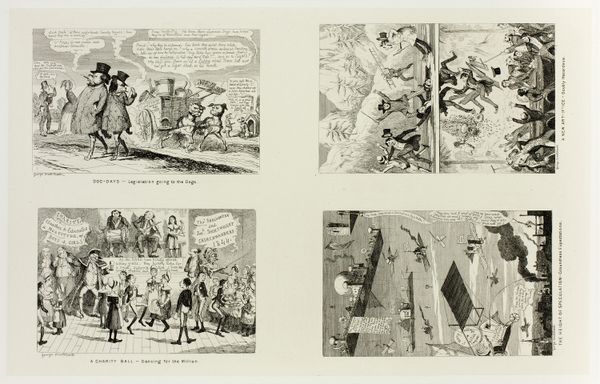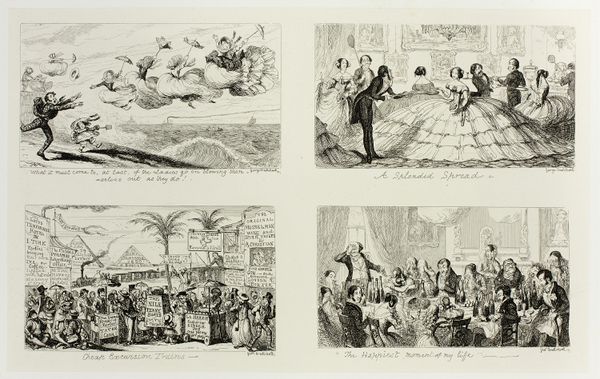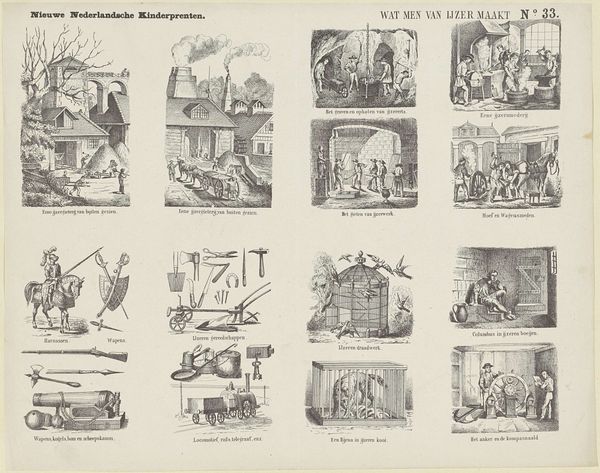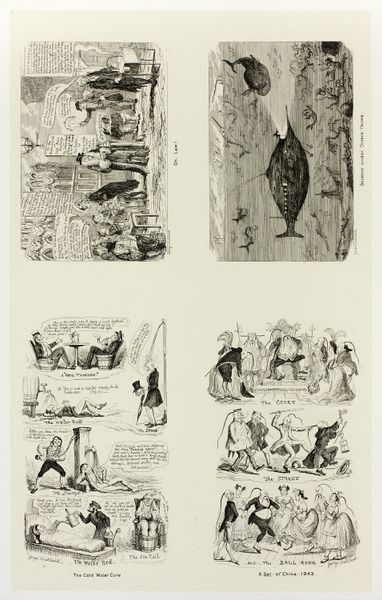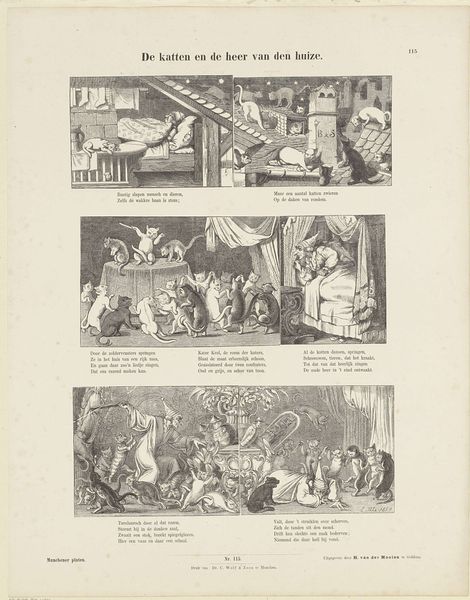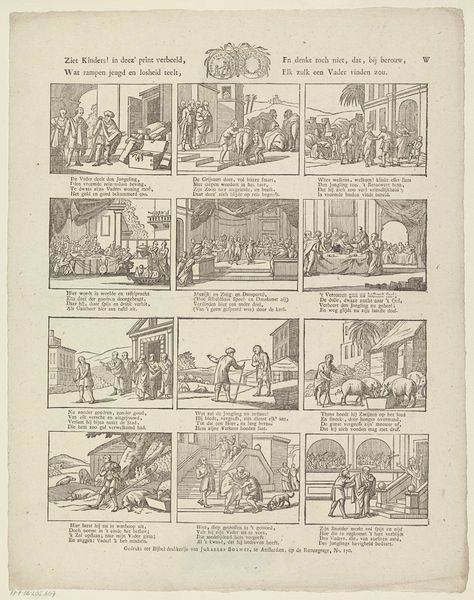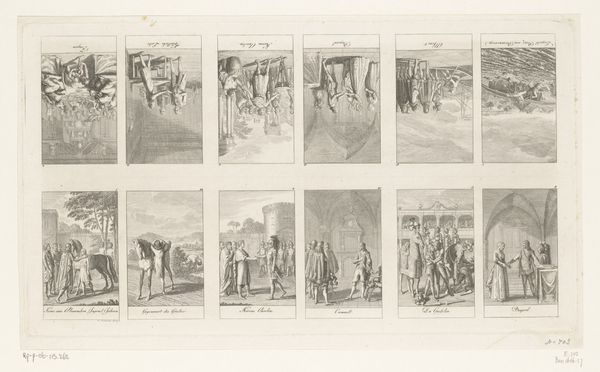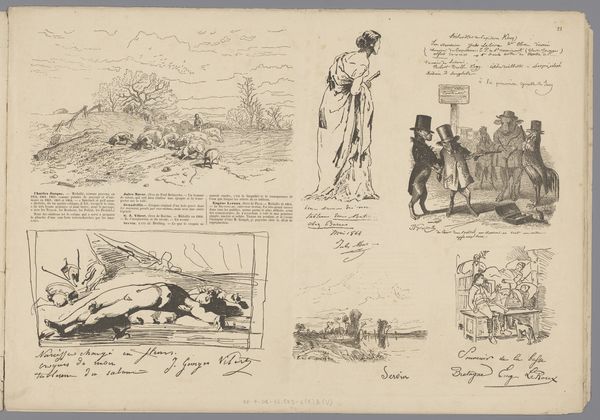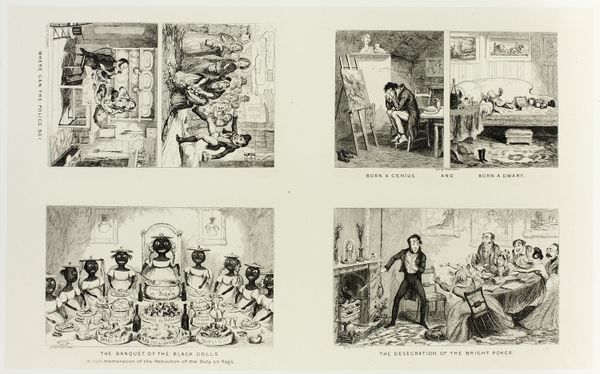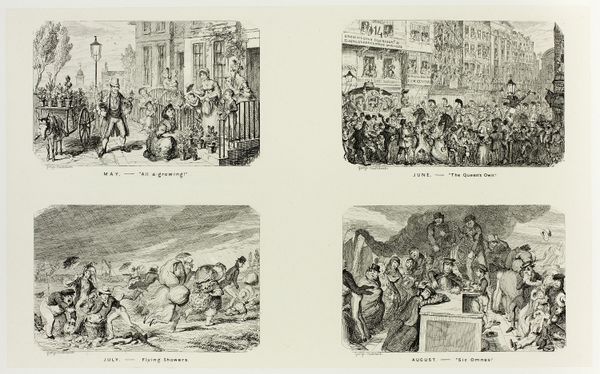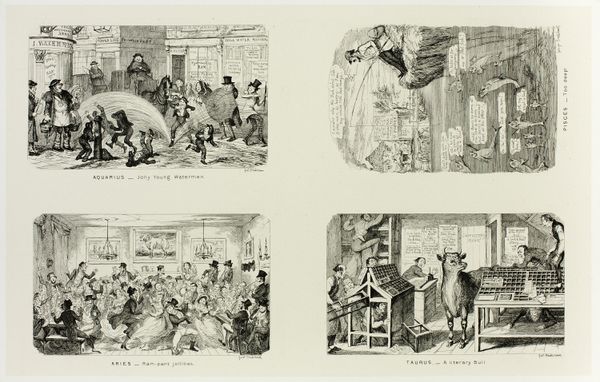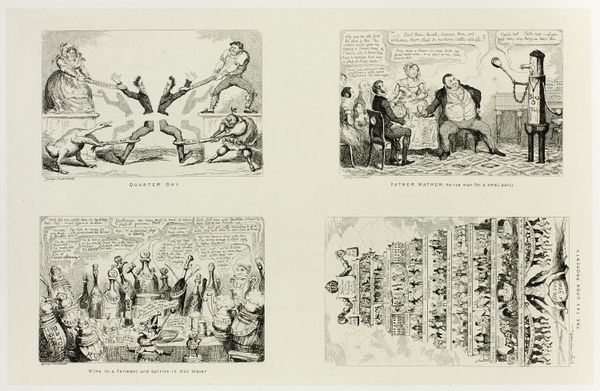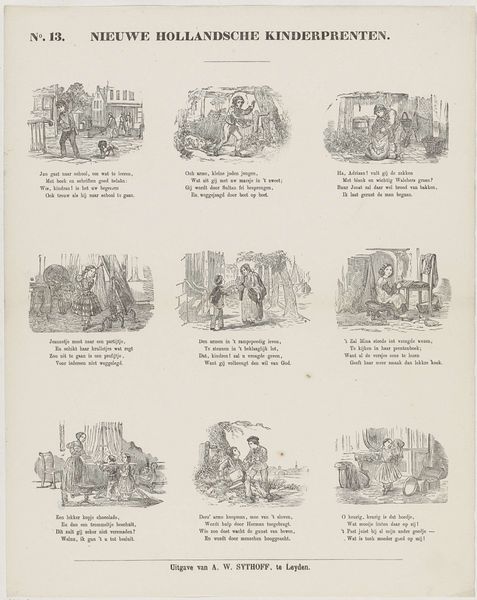
Show of Hands For a Liberal Candidate from George Cruikshank's Steel Etchings to The Comic Almanacks: 1835-1853 (top left) c. 1843 - 1880
0:00
0:00
Dimensions: 334 × 214 mm (primary support); 507 × 346 mm (secondary support)
Copyright: Public Domain
Editor: Today we're looking at George Cruikshank's "Show of Hands For a Liberal Candidate" etching, dating circa 1843-1880. The crisp lines and packed composition create such a lively scene. What details jump out at you, how would you begin to analyze such a visually busy piece? Curator: Observe how Cruikshank organizes the pictorial field. The dense aggregation of figures directs the eye towards the central candidate, doesn't it? Note also the formal balance achieved through the symmetrical arrangement of the crowd flanking the speaker's platform. What is the effect of that symmetrical disposition? Editor: It makes the speaker really pop; you almost don’t see anyone else at first! Is Cruikshank using line to suggest direction or maybe some type of political messaging? Curator: Precisely! Consider how the etched lines are not merely descriptive but performative. See how the lines that constitute the upraised hands also serve to create a visual rhythm. Semiotically, they represent not just a gesture of support, but an active participation in the spectacle. How might we relate this to the socio-political context of Victorian England? Editor: Is this etching, with all those lines and detailed figures, related to any earlier period art, like the dense narrative scenes we see in, say, the Renaissance? Curator: A provocative connection! And look at how the use of cross-hatching is to build form and volume, something that you may recall from the old masters. But whereas in the Renaissance, it serves to illustrate religious scenes, Cruikshank adapts it to create a very different register: political satire. Editor: The use of line as both representation and expression is a new approach I hadn’t quite grasped before. Curator: It demonstrates how an artwork is always in dialogue with its historical predecessors and, crucially, how an artist repurposes tradition in their work.
Comments
No comments
Be the first to comment and join the conversation on the ultimate creative platform.
